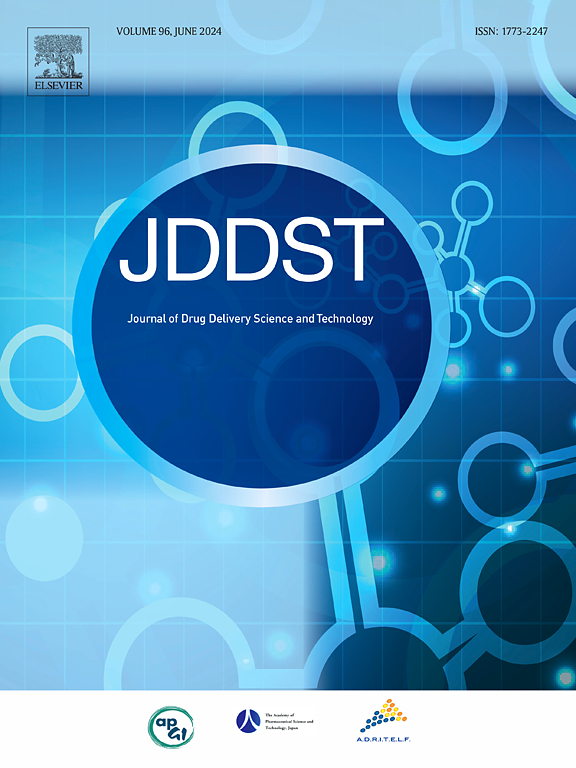Development of chitosan-gelatin loaded with copaiba oil using nanoemulsion complex coacervation
IF 4.5
3区 医学
Q1 PHARMACOLOGY & PHARMACY
Journal of Drug Delivery Science and Technology
Pub Date : 2025-04-01
DOI:10.1016/j.jddst.2025.106877
引用次数: 0
Abstract
The encapsulation of copaiba oil by complex coacervation from a nanoemulsion is developed herein. Copaiba oil is susceptible to degradation without adequate protection, including volatilization and heat and light-induced damage. Additionally, its potent aroma, insolubility in water, and restricted bioavailability significantly impede its clinical use, and to overcome these limitations, the copaiba oil was encapsulated. An oil-in-water nanoemulsion of copaiba oil was initially prepared using soy lecithin and type-B gelatin as surfactants. The mechanical dispersion at 1609 g produced stable copaiba oil submicrometric droplets, confirmed by dynamic light scattering and Zeta potential analysis. Subsequently, by adding chitosan to the nanoemulsion, a coacervate system was formed. Coacervate particles were obtained with high yields (approximately 90 %) at chitosan-to-gelatin ratios of 1:15 and 1:10. Optical and electron microscopy and Fourier-transform infrared spectroscopy supporting the incorporation of copaiba oil droplets into the coacervate particles. This coacervate process eliminates the need for chemical agents, enhances the stability of copaiba oil, and represents a promising avenue for its practical application in therapeutic formulations.

求助全文
约1分钟内获得全文
求助全文
来源期刊
CiteScore
8.00
自引率
8.00%
发文量
879
审稿时长
94 days
期刊介绍:
The Journal of Drug Delivery Science and Technology is an international journal devoted to drug delivery and pharmaceutical technology. The journal covers all innovative aspects of all pharmaceutical dosage forms and the most advanced research on controlled release, bioavailability and drug absorption, nanomedicines, gene delivery, tissue engineering, etc. Hot topics, related to manufacturing processes and quality control, are also welcomed.

 求助内容:
求助内容: 应助结果提醒方式:
应助结果提醒方式:


